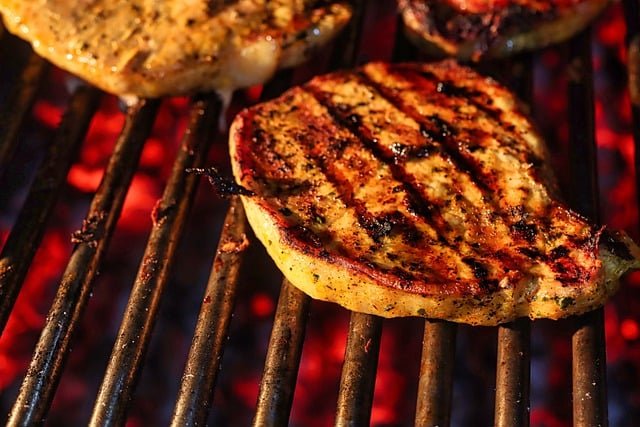Barbecue Basics: Techniques for Grill Cooking and Outdoor Food
Barbecue is a cooking method and social ritual that brings people together around fire and flavor. It spans slow-smoking large cuts to quick searing over high heat, and it’s practiced in backyards, parks, and at public events. Understanding the basics of heat control, timing, and ingredient selection helps turn a routine cookout into consistent, satisfying outdoor food.

What is barbecue?
Barbecue refers to both a cooking technique and the social event centered on cooking outdoors. As a technique, it often involves low-and-slow heat with smoke to break down connective tissue and develop deep flavors in meats, though regional styles vary in sauces, rubs, and wood choices. As an event, barbecue denotes any gathering where a grill or smoker is used to prepare food, from simple weekday dinners to multi-hour communal meals.
Barbecue also differs from grilling in intent and method: grilling typically means high, direct heat for fast-cooking items like burgers and vegetables, while barbecue emphasizes longer cooking times and smoke penetration. Recognizing these distinctions helps you choose the right equipment and approach for the food and time available.
How to use a grill?
Using a grill effectively starts with understanding heat zones and airflow. On a charcoal grill, pile coals on one side for direct searing and keep the other side cooler for indirect cooking; on gas grills, adjust burners to create similar zones. Preheat the grill, clean the grates, and oil them lightly to reduce sticking and promote even browning. Safety matters: keep a spray bottle or extinguisher nearby and follow manufacturer guidelines.
Temperature control is essential: use a reliable thermometer to monitor both grill temperature and internal temperature of food. For meats, an instant-read thermometer ensures safe and desired doneness without repeatedly cutting into the item. For more complex barbecue cooking, consider using a smoker or a grill setup that allows consistent low heat over several hours.
Key cooking techniques
Several core techniques appear across barbecue and grill cooking. Searing creates a flavorful crust through the Maillard reaction; do this over high heat, then move the item to lower heat to finish. Smoking requires choosing the right wood—fruitwoods like apple or cherry for milder flavors, and hickory or oak for a stronger profile—and maintaining steady low temperatures for extended periods.
Resting cooked food is often overlooked but important: letting meat rest for 10–20 minutes after cooking allows juices to redistribute, improving texture and flavor. Marinating, dry rubs, and basting each alter flavor and moisture differently; apply rubs before cooking for a seasoned crust, and use sauces sparingly during the final stages to prevent burning.
Planning outdoor meals
Successful outdoor cooking begins with a simple plan: select recipes suited to your time and equipment, prepare sides and condiments in advance, and arrange a serving area protected from wind and sun. Consider balance: pair richer smoked meats with bright salads and acidic condiments to cut through fat. Think about timing so hot items are served soon after finishing and cold sides remain chilled.
Weather and local regulations can affect outdoor cooking choices; check for any fire restrictions in your area and adapt to wind or rain by positioning the grill near a sheltered spot. For larger gatherings, staging food—keeping slower items warm in a cooler or insulated carrier and finishing smaller items close to service time—helps maintain quality without stressful last-minute multitasking.
Choosing barbecue food
Barbecue and grill cooking work well for a wide range of ingredients. Classic choices include pork shoulder, brisket, ribs, chicken, and sausages, which respond well to smoke and longer cooking. For quicker grill sessions, opt for steaks, fish, vegetables, and kebabs that take minutes rather than hours. Vegetarian and vegan options such as portobello mushrooms, halloumi, and marinated tofu are also excellent on a hot grill.
Ingredient quality and cut selection matter: tougher cuts with more connective tissue benefit from slow cooking to become tender, while tender cuts are better for direct grilling. Match seasoning and sauces to the cooking method—robust rubs and long cooks tolerate stronger smoke flavors, while delicate foods benefit from lighter seasoning and shorter cook times.
Barbecue is part technique, part timing, and part creativity. Building skills—controlling heat, choosing the right wood or fuel, and matching recipes to equipment—makes outdoor cooking more reliable and enjoyable. Practical planning and attention to food safety ensure meals that are flavorful and well-prepared.
Conclusion
Whether you’re searing a steak, smoking a shoulder, or grilling vegetables, the fundamentals of barbecue center on heat management, ingredient selection, and timing. With practice you can adapt techniques to different grills and settings, producing consistent outdoor food that fits your taste and schedule. Keep experimenting with rubs, woods, and side dishes to refine a personal approach to barbecue and outdoor cooking.




